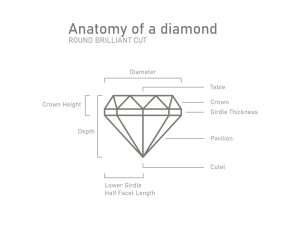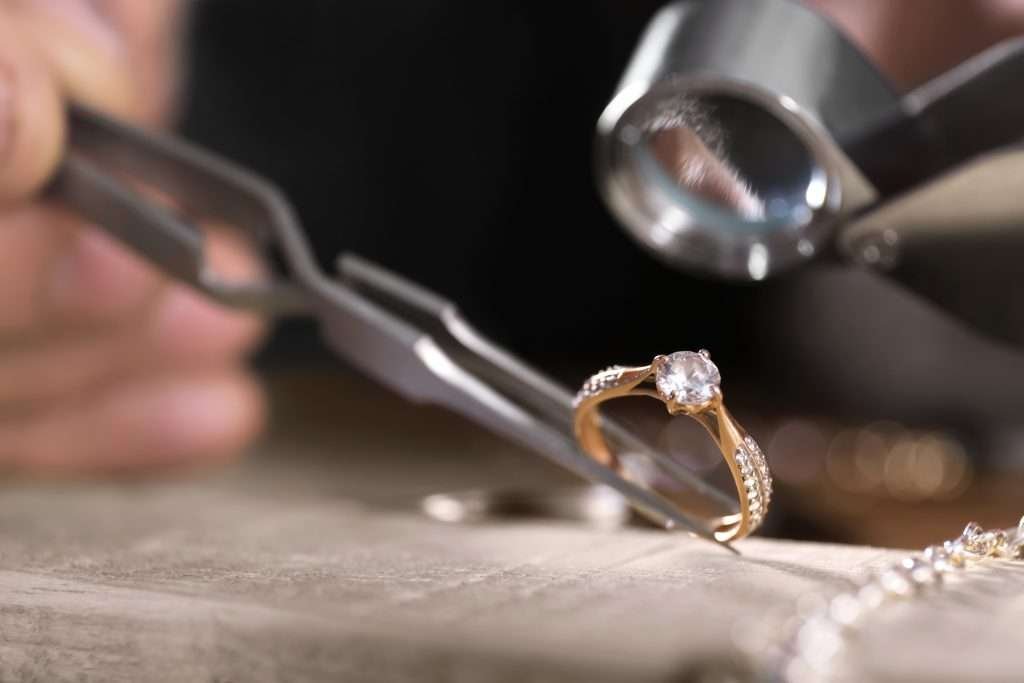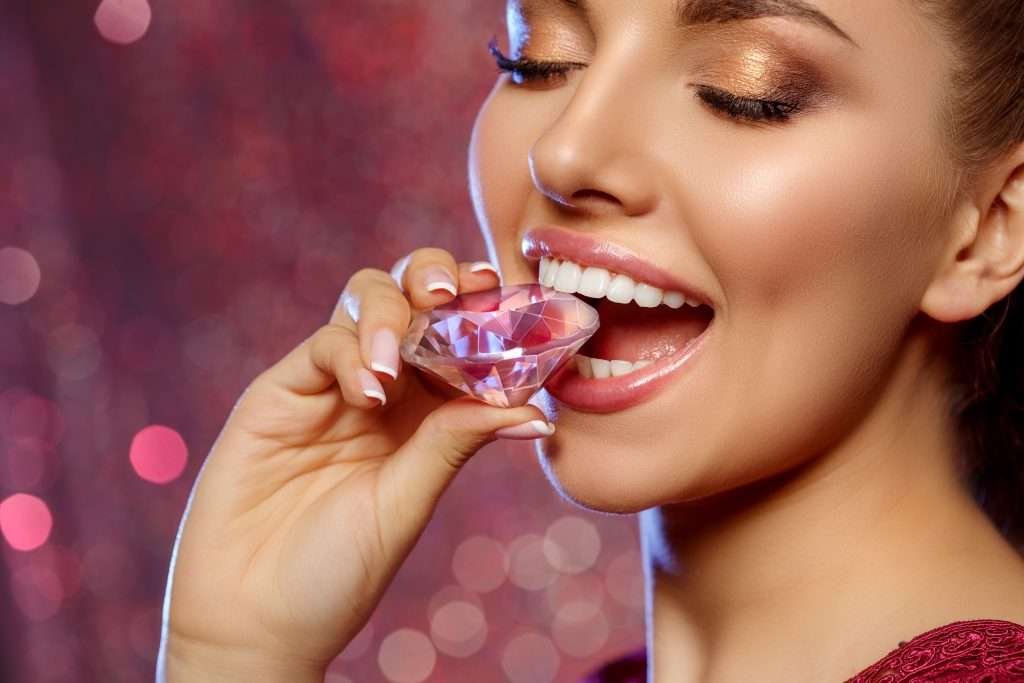Diamond anatomy encompasses the intricate components that contribute to a diamond’s beauty, quality, and value. From diamonds shape to its cut and proportions, understanding diamond anatomy is essential when evaluating these precious gemstones. In this article, we will explore the different component and features of diamond anatomy, shedding light on their significance in determining a diamond’s allure.
I. Table and Crown : Reflecting Brilliance
The table, the largest facet on the diamond’s top surface, plays a crucial role in reflecting light back to the viewer. Adjacent to the table, the crown encompasses a series of facets that work together to create the diamond’s brilliance and fire. And this mesmerizing display captivate the human eyes strongly.
II. Girdle: A Band of Definition
The girdle forms a narrow band, separating the crown from the pavilion. As the widest part of the diamond, the girdle can be faceted or polished, adding definition to the gemstone’s profile and contributing to its overall appearance.
III. Pavilion and Culet :Reflecting Sparkle
The pavilion, extending from the girdle to the diamonds culet, mirrors the crown’s arrangement of facets. These facets reflect and refract light, enhancing the diamond’s sparkle and allure. The culet, a tiny facet at the bottom of the pavilion, serves as a protective measure, preventing damage to the diamond during the cutting and setting process.
IV. Depth and Diameter: Proportions and Carat Weight
The depth of a diamond refers to the distance from the table to the culet, playing a vital role in determining the gemstone’s proportions and overall appearance. Diameter, on the other hand, refers to the width of the diamond at its widest point, typically the girdle. This measurement contributes to calculating the diamond’s carat weight.
V. Culet Size, Symmetry, and Polish :Crafting Brilliance
The cutlet size, ideally small or pointed, influences the diamond’s appearance and brilliance. A large or poorly proportioned cutlet can diminish the diamond’s allure. Symmetry refers to the precision of a diamond’s cut, encompassing the alignment of its facets and the evenness of its shape. Exceptional symmetry enhances a diamond’s beauty and value. The polish, representing the quality of the diamond’s surface, ensures a smooth and reflective finish, ultimately contributing to the stone’s brilliance.
A comprehensive understanding of diamond anatomy is fundamental when evaluating the quality and value of these precious gems. Buyers can make informed decisions by delving into the intricate features of a diamond, such as its proportions, symmetry, and polish. In this way, they appreciate the inherent beauty that lies within each stone. In this way, they embrace the marvels of diamond anatomy and unlock the radiant allure of these remarkable gemstones.
VI. Diamond anatomy diagram



